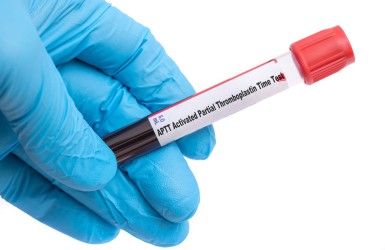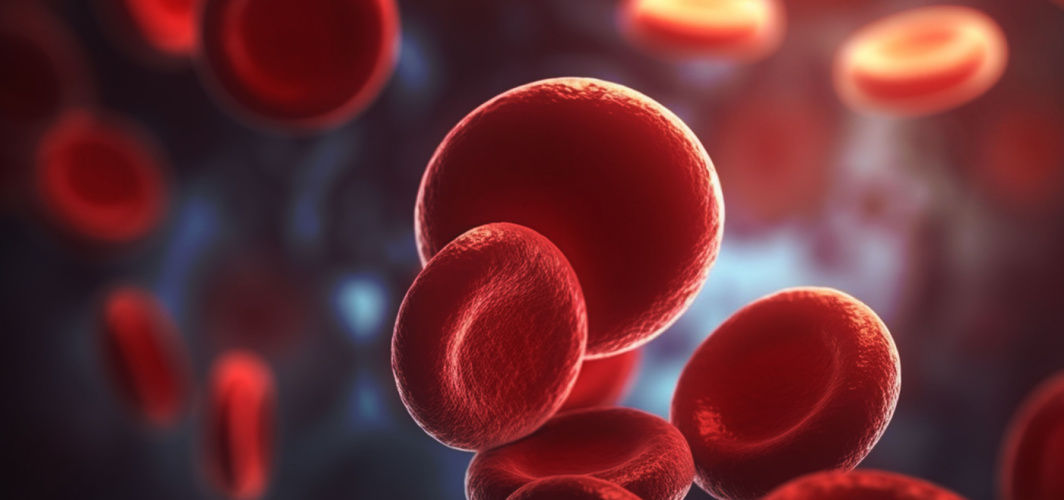General Health
Activated Partial Thromboplastin Time (APTT) Test – Normal Range, Purpose, Procedure, and Results Interpretation
5 min read
By Apollo 24|7, Published on - 22 May 2025
Share this article
0
0 like

The Activated Partial Thromboplastin Time (APTT) test is a diagnostic blood test used to evaluate the efficiency of the coagulation cascade, which is the process by which blood clots form to prevent excessive bleeding. This test measures the time it takes for blood plasma to clot after the addition of specific reagents. It primarily assesses the intrinsic and common pathways of the coagulation system, including clotting factors such as XII, XI, IX, VIII, X, V, II (prothrombin), and fibrinogen. The APTT test is often performed alongside the Prothrombin Time (PT) test for a comprehensive evaluation of the clotting system.
The APTT test plays a crucial role in diagnosing bleeding disorders, monitoring the effectiveness of anticoagulation therapy, and confirming adequate coagulation before surgical procedures. It is an important diagnostic test for detecting abnormalities in clotting factor activity, which may result in conditions like haemophilia, von Willebrand disease, or disseminated intravascular coagulation (DIC).
Purpose of the APTT Test
The APTT test serves several important purposes in medical diagnostics and patient care:
- Diagnosing Bleeding Disorders: The test helps identify conditions such as haemophilia A and B, von Willebrand disease, and clotting factor deficiencies. These disorders can lead to prolonged clotting times and excessive bleeding.
- Monitoring Anticoagulation Therapy: For patients receiving heparin therapy, the APTT test is used to monitor the effectiveness and safety of the treatment, ensuring that the blood does not clot too quickly or too slowly.
- Pre-Surgical Screening: The test is often performed before surgeries to ensure normal coagulation status, reducing the risk of excessive bleeding during or after the procedure.
- Evaluating Unexplained Bleeding or Clotting: When patients present with unexplained bleeding or thrombosis, the APTT test can provide valuable insights into potential clotting factor abnormalities or inhibitors.
- Assessing Liver Function: Since the liver produces many clotting factors, the APTT test can help detect coagulation abnormalities associated with liver dysfunction.
How to Prepare for an APTT Test?
Preparing for an APTT test is straightforward and typically requires minimal effort. Here are some key considerations:
- Fasting: Fasting is not usually required for the APTT test unless it is combined with other tests that require fasting, such as glucose or lipid profiles.
- Medication Review: Inform your healthcare provider about any medications, supplements, or anticoagulants you are taking, as these can influence clotting times and affect test results.
- Avoid Alcohol: Refrain from consuming alcohol for at least 24 hours before the test, as it can impact clotting factor activity.
- Stay Hydrated: Drinking water before the test can make the blood draw process smoother and more comfortable.
Following these simple steps ensures accurate test results and a hassle-free testing experience.
Procedure for APTT Test
The APTT test is a simple and minimally invasive procedure. Here’s what to expect:
- Blood Sample Collection: A healthcare professional will clean the area, usually the inside of your elbow, and insert a sterile needle into a vein to collect a blood sample. The process is quick and typically causes minimal discomfort.
- Laboratory Analysis: The blood sample is sent to a laboratory, where reagents such as calcium and phospholipids are added to the plasma. The time taken for clot formation is measured in seconds.
- Result Reporting: The results are usually available within a few hours to a day and are interpreted by your healthcare provider in the context of your overall health and symptoms.
The procedure is safe, quick, and essential for diagnosing and monitoring various health conditions.
APTT Test: Results Interpretation
The APTT test results are expressed in seconds and provide insights into the efficiency of the clotting process. Here’s how to interpret the results:
- Normal APTT: Indicates normal clotting function, with clotting times typically within the normal range (e.g., 25–35 seconds).
- Prolonged APTT: Suggests delayed clotting, which may be caused by clotting factor deficiencies, liver disease, heparin therapy, or antiphospholipid syndrome.
- Shortened APTT: Rare but may indicate excessive clotting factor activity or conditions like disseminated intravascular coagulation (DIC).
It’s important to note that APTT results should always be interpreted alongside other diagnostic findings and clinical symptoms to provide a complete picture of a patient’s health.
1. APTT Test Normal Ranges
The normal range for APTT values varies slightly depending on the laboratory and testing methods. General guidelines include:
- Normal Range: 25–35 seconds
- On Heparin Therapy: 60–80 seconds
These ranges provide a baseline for identifying abnormalities in clotting times. Your healthcare provider will interpret your results based on your age, symptoms, and overall health.
2. Abnormal APTT Levels
Abnormal APTT levels can indicate various health conditions:
- Prolonged APTT: Common causes include clotting factor deficiencies (e.g., haemophilia), liver disease, heparin therapy, or the presence of inhibitors such as antiphospholipid antibodies.
- Shortened APTT: Rare but may occur in conditions like disseminated intravascular coagulation (DIC) or excessive clotting factor activity.
Abnormal APTT levels warrant further investigation to determine the underlying cause and appropriate treatment.
Managing Abnormal APTT Test Results
If your APTT test results are abnormal, your healthcare provider will recommend steps to address the underlying issue:
- Further Testing: Additional tests, such as clotting factor assays or imaging studies, may be ordered to pinpoint the cause of abnormal APTT levels.
- Treatment Plans: Depending on the diagnosis, treatment may include medications like clotting factor concentrates, anticoagulants, or therapies targeting specific conditions.
- Monitoring: Regular follow-up tests may be necessary to track changes in APTT levels and assess treatment effectiveness.
Timely intervention and ongoing monitoring are essential for managing abnormal APTT levels and improving overall health.
Conclusion
The Activated Partial Thromboplastin Time (APTT) test is a critical diagnostic tool for evaluating how well your blood clots and identifying potential issues with the clotting process. It measures the time it takes for blood plasma to form a clot, offering valuable insights into bleeding disorders, the effectiveness of anticoagulant treatments, and overall coagulation function. This test is highly accurate and reliable, making it an integral part of modern healthcare.
If you’re experiencing symptoms like unexplained bleeding, frequent bruising, or abnormal clotting, it’s important to consult your healthcare provider about whether the APTT test is appropriate for you. This test can play an essential role in diagnosing underlying conditions and guiding effective treatment plans.
General Health
Frequently Asked Questions
What is the APTT test normal range?
What is the APTT test normal range?
What is the APTT test normal range in children?
What is the APTT test normal range in children?
What is the APTT test normal range in pregnancy?
What is the APTT test normal range in pregnancy?
How does the APTT test help diagnose bleeding disorders?
How does the APTT test help diagnose bleeding disorders?
Can medications affect APTT test results?
Can medications affect APTT test results?
How is the APTT test conducted?
How is the APTT test conducted?
Do I need to fast before the APTT test?
Do I need to fast before the APTT test?
What can cause a prolonged APTT?
What can cause a prolonged APTT?
Is the APTT test safe during pregnancy?
Is the APTT test safe during pregnancy?
What conditions can cause a shortened APTT?
What conditions can cause a shortened APTT?
Leave Comment
Recommended for you

General Health
5 Home Remedies for UTI
The most common way to treat urinary tract infections (UTIs) is by consuming antibiotics. However, should a person consume these drugs without considering other measures? In simple words, not really. One can try proven home remedies to get quick relief from UTI. This blog explains some practical steps to follow after an unwanted UTI episode.

General Health
Blood Disorders: Types, Symptoms & Treatments
Learn about different types of blood disorders, their symptoms, and the latest treatments available. Stay informed and take control of your blood health!

General Health
Can Frequent Yawning Be A Symptom To A Health Problem?
Yawning is a common and natural response of the body to being tired or sleepy. However, yawning frequently can be a sign of a serious health issue as well.
Subscribe
Sign up for our free Health Library Daily Newsletter
Get doctor-approved health tips, news, and more.
Visual Stories

Could There Be More to Your Snore?
Tap to continue exploring
Recommended for you

General Health
5 Home Remedies for UTI
The most common way to treat urinary tract infections (UTIs) is by consuming antibiotics. However, should a person consume these drugs without considering other measures? In simple words, not really. One can try proven home remedies to get quick relief from UTI. This blog explains some practical steps to follow after an unwanted UTI episode.

General Health
Blood Disorders: Types, Symptoms & Treatments
Learn about different types of blood disorders, their symptoms, and the latest treatments available. Stay informed and take control of your blood health!

General Health
Can Frequent Yawning Be A Symptom To A Health Problem?
Yawning is a common and natural response of the body to being tired or sleepy. However, yawning frequently can be a sign of a serious health issue as well.